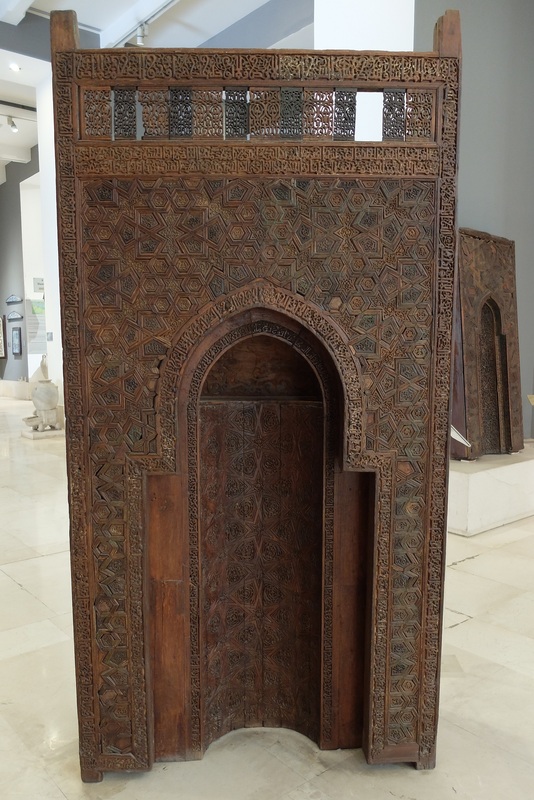Portable mihrabs
Type:
Mihrabs
Date:
1133
Location or Findspot (Modern-Day Country):
Egypt
Medium:
Wood
Dimensions:
210 × 111 × 45 cm
Description:
This portable wooden mihrab was originally in the mashhad (mausoleum) of Sayyidah Ruqayyah, the daughter of 'Ali, who was the fourth caliph and the husband of Muhammad's daughter Fatima. In addition to its vegetal motifs, it has an epigraphic frieze informing readers that it was presented to the shrine by al-Sayyida 'Ulam al-Amiriyya (d. 1140), the wife of the Fatimid caliph al-Amir bi-Ahkam Allah (r. 1101–30). Its portable nature suggests that it might have been brought out to the courtyard on special occasions, when visitors to the shrine were too numerous for the main building.
Under the Tulunids and Fatimids, from the ninth century onwards, smaller portable mihrabs carved in wood became popular in Egypt. Much like Christian portable altars, these mihrabs could serve as the focal points of prayer while traveling. In Shi'i Islam, they were sometimes placed under the heads of the deceased. Many also have holes in them, suggesting that they were sometimes hung on walls.
Under the Tulunids and Fatimids, from the ninth century onwards, smaller portable mihrabs carved in wood became popular in Egypt. Much like Christian portable altars, these mihrabs could serve as the focal points of prayer while traveling. In Shi'i Islam, they were sometimes placed under the heads of the deceased. Many also have holes in them, suggesting that they were sometimes hung on walls.
Relevant Textbook Chapter(s):
6,
7
Repository and Online Resources:
• The mihrab from the mausoleum of Sayyidah Ruqayyah is now at the Museum of Islamic Art in Cairo.
• Visit the website of the David Museum in Copenhagen to see an example of a smaller portable mihrab.
• See another portable mihrab at the Louvre in Paris.

